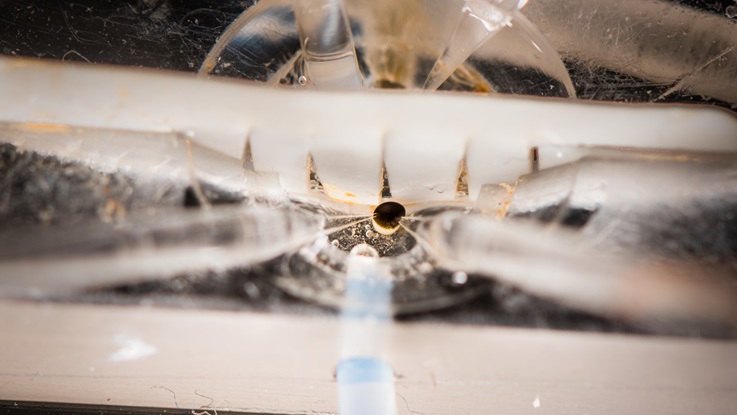Photo credit yodiyim
Sara Liin carries out preclinical research into ion channels, specialised proteins that play a critical role in the heart’s electrical activity that regulates the heartbeat. Hereditary changes in these ion channels can cause disturbances of the heart rhythm, such as atrial and ventricular fibrillation. In serious cases, such rhythm disturbances can lead to cardiac arrest.
Sara Liin has been awarded an ERC Starting Grant with a total value of EUR 1.5 million, spread over five years. The research grant will enable her to start a new project, building on interesting results from a pilot study in her research group.Sara Liin.
“This is a project that has arisen from a frustration that we do not yet fully understand how hereditary changes can increase the risk of being affected by heart rhythm disturbances. People with the same hereditary changes may run significantly different risks of developing serious disturbances in rhythm, and cardiac arrest. It has become clear that it’s not enough to identify hereditary mutations, and that we are missing important parts of the puzzle. We plan to try to find the fundamental causes of these differences”, says Sara Liin, research fellow in the Department of Clinical and Experimental Medicine.
The role of the body’s own molecules
The new project is based on data that the scientists collected during a pilot study. They have identified several of the body’s own molecules that affect the important ion channels in the heart. Their findings suggest that the effects of these molecules on ion channels, and thus also on heart activity, differ, depending on the particular hereditary mutation that the ion channel displays.
“It is our ambition to map not only protective molecules but also harmful ones and examine how they contribute to differences between individuals: some are not affected by disturbances in rhythm while others run an increased risk. One of the major aims of the project is to discover key combinations of molecules and hereditary mutations that determine the risk of developing disturbances in rhythm”, says Sara Liin.
The research group uses genetic information available from patients with a hereditary increased risk of rhythm disturbances. They study in detail proteins in the ion channels, at the atomic level, to investigate the interactions between mutated ion channels and several of the body’s own molecules. The scientists hope that their work will in the long run contribute to identifying who runs the greatest risk of being affected by serious rhythm disturbances, as a consequence of the molecular interactions.
Another question that the scientists will attempt to answer is whether it is possible to use the body’s own protective molecules. Is it possible to develop new drugs based on the body’s own substances, while being even more effective in preventing disease in people with a hereditary increased risk?
Tough competition
“It means a lot, of course, being award an ERC Starting Grant. And it’s a sign that experts in our research field agree with us about the value of investing in research that we find exciting and relevant”, says Sara Liin.
A total of 408 scientists received research grants, 14 of them in Sweden. ERC Starting Grants are awarded to particularly promising researchers at an early phase of their careers, to enable them to carry out breakthrough research and establish their own research groups. Competition for these research grants is extremely tough – only 13% of the applications this year were successful. The total amount awarded was EUR 621 million. ERC Starting Grants are one component of the EU’s research and innovation programme Horizon 2020.Translation by George Farrants



